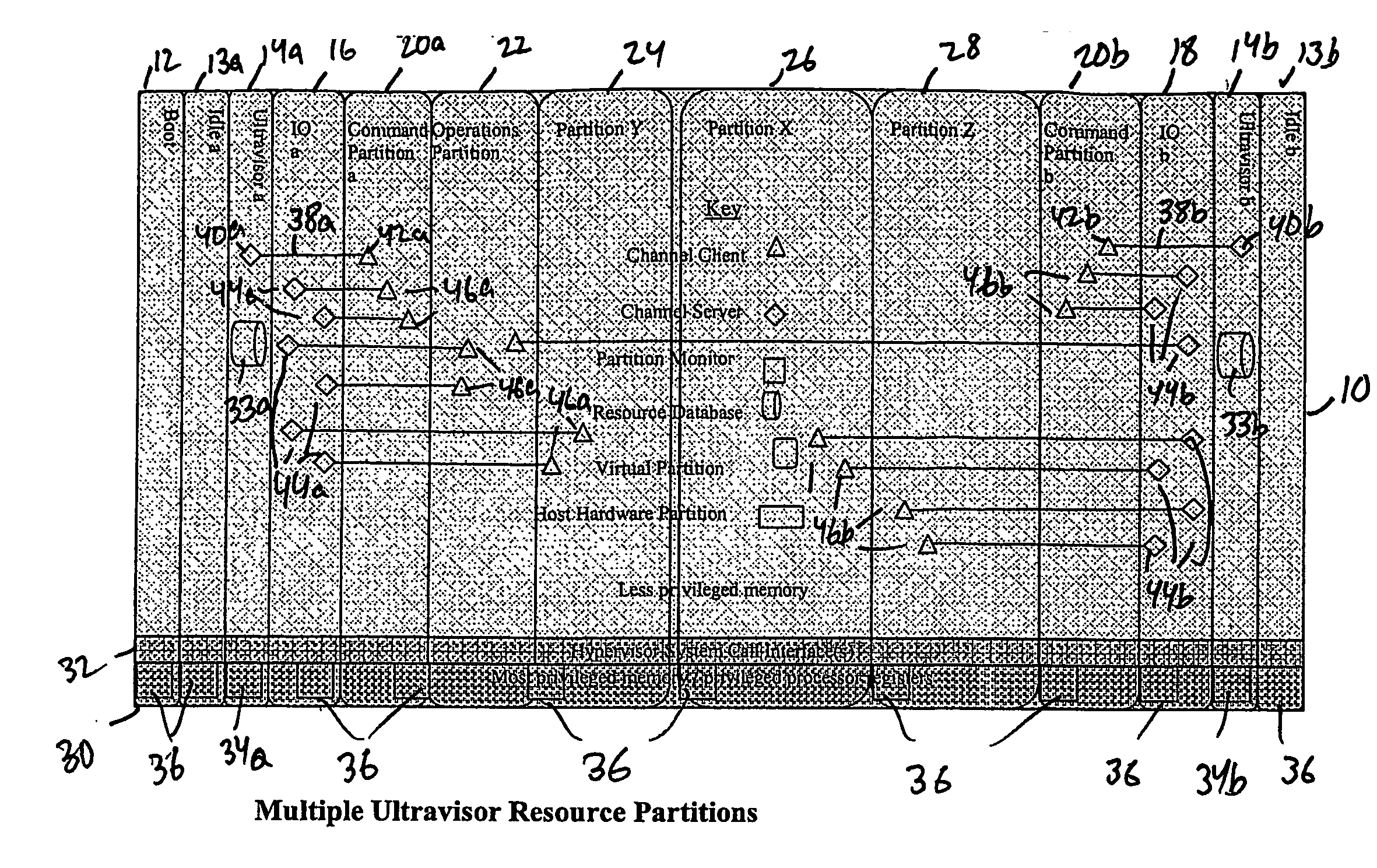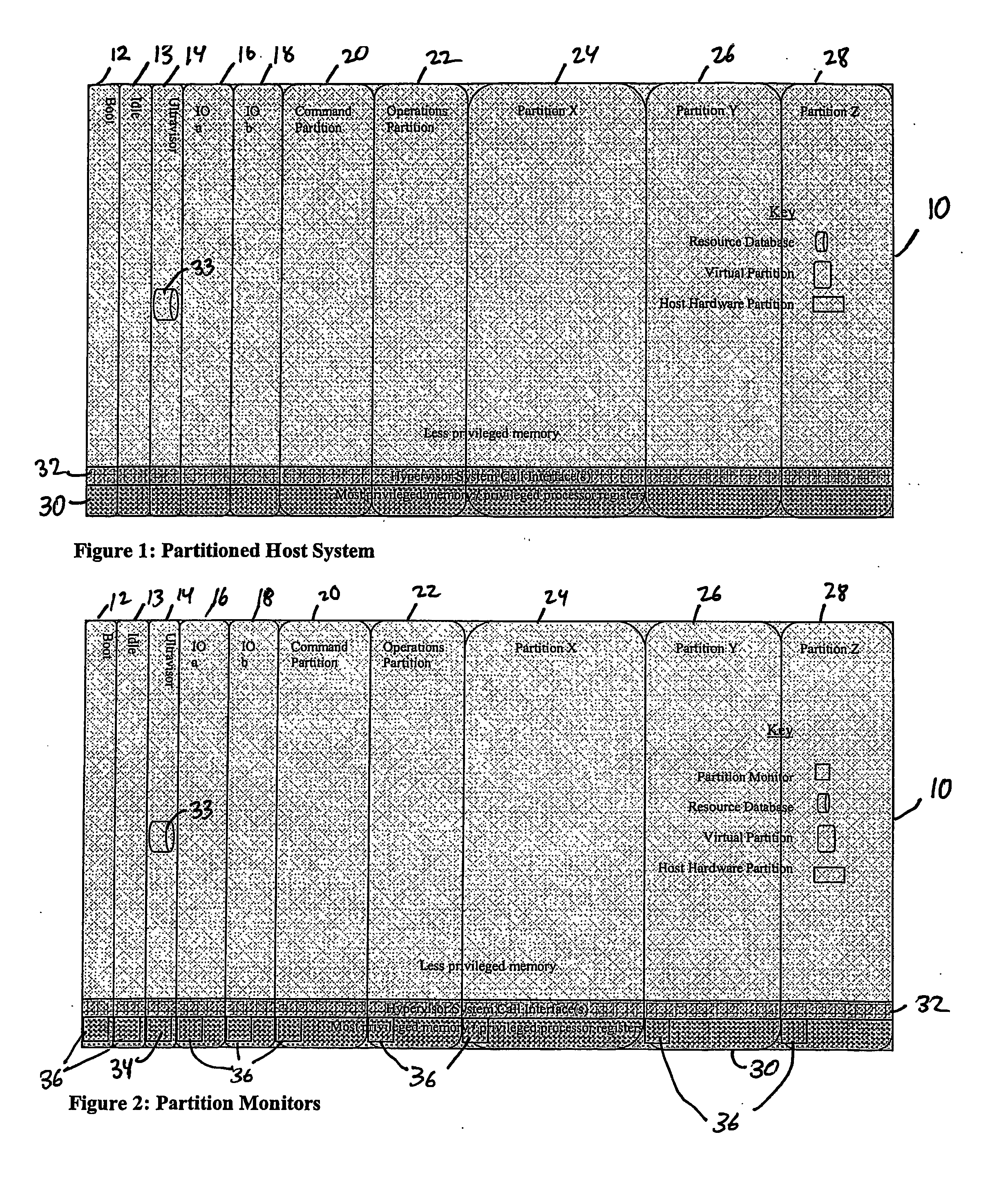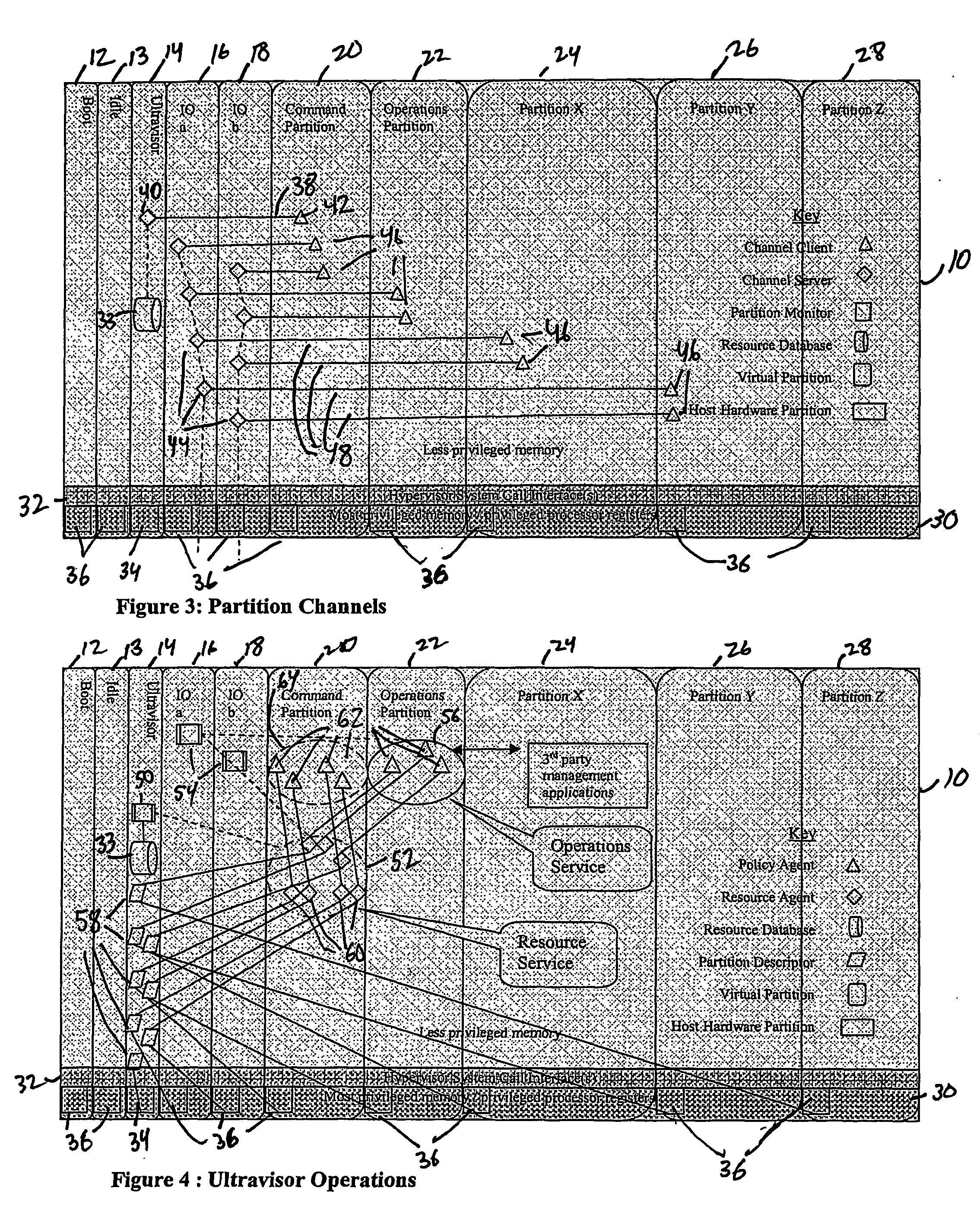Computer system para-virtualization using a hypervisor that is implemented in a partition of the host system
a computer system and hypervisor technology, applied in the field of computer system paravirtualization, can solve the problems of high processing cost of update intensive operations, large processing cost of complete virtualization approach taken by vmware and connectix, and create i/o partitions, etc., and achieve the effect of optimal efficiency
- Summary
- Abstract
- Description
- Claims
- Application Information
AI Technical Summary
Benefits of technology
Problems solved by technology
Method used
Image
Examples
Embodiment Construction
[0031] A detailed description of illustrative embodiments of the present invention will now be described with reference to FIGS. 1-15. Although this description provides detailed examples of possible implementations of the present invention, it should be noted that these details are intended to be exemplary and in no way delimit the scope of the invention.
[0032] Definitions, Acronyms, and Abbreviations:
[0033] 3D-VE—Three-Dimensional Visible Enterprise. A 4 layer model of a data center including strategy, business processes, applications, and infrastructure.
[0034] ACPI—Advanced Configuration and Power Interface.
[0035] ADS—Automated Deployment System. It is designed to provide ‘zero-touch’ provisioning of server hardware. Naturally, this can also provision virtual server hardware. See http: / / www.microsoft.com / windowsserver2003 / technologies / management / ads / default.mspx for details.
[0036] ATA—AT Attachment (for low cost disks).
[0037] CMP—Cellular Multi-Processing.
[0038] DMZ—De-Mil...
PUM
 Login to View More
Login to View More Abstract
Description
Claims
Application Information
 Login to View More
Login to View More - R&D
- Intellectual Property
- Life Sciences
- Materials
- Tech Scout
- Unparalleled Data Quality
- Higher Quality Content
- 60% Fewer Hallucinations
Browse by: Latest US Patents, China's latest patents, Technical Efficacy Thesaurus, Application Domain, Technology Topic, Popular Technical Reports.
© 2025 PatSnap. All rights reserved.Legal|Privacy policy|Modern Slavery Act Transparency Statement|Sitemap|About US| Contact US: help@patsnap.com



